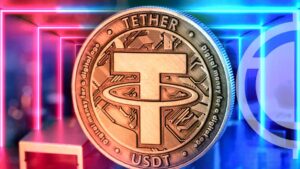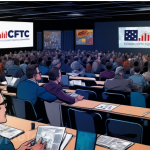
The decentralized physical infrastructure network tokens, commonly called the DePIN tokens, enhance efficiency, resilience, and cost reduction in networks and bring them to a tangible infrastructure. Further, as DePIN adoption increases, the projects gain momentum in the potential of their use cases.
In this monthly DePIN crypto coin analysis, the article will provide detailed progress of the top 5 DePIN crypto coins in the market. The article will shed light on Bittensor (TAO), Internet Computer (ICP), Filecoin (FIL), Render (RNDR) and The Graph (GRT).
Key DePIN Crypto Projects and Market Insights
Among DePIN crypto projects, five tokens have emerged as notable players this month. Each token has shown unique trends, performance indicators, and varying adoption rates. Collectively, these DePIN crypto coins reflect both the promise and the volatility of the DePIN sector.
Bittensor (TAO)
Bittensor (TAO) stands out with its innovative approach to decentralized machine learning. At the time of writing, TAO was priced at $504.72 and has seen a 7-day downward trend, declining by 10.3%. Over the past 24 hours, TAO experienced a 7.1% drop, coupled with a trading volume of $210.6 million. Despite the decline, TAO’s robust market cap of $3.72 billion indicates sustained investor interest. The project’s focus on AI and decentralized computation made it a pivotal DePIN token. The recent volatility, however, suggests market uncertainty, common in the DePIN landscape.
Internet Computer (ICP)
Internet Computer (ICP), priced at $7.64 at the time of press, aims to decentralize web infrastructure and enable smart contracts. It has demonstrated volatility, with a 4.2% drop over the last week and an 8.5% decrease over the past 24 hours. The trading volume stands at $135.4 million, while the market cap sits at $3.61 billion. The DePIN model allows ICP to host decentralized websites and applications. However, the fluctuating prices reflect ongoing market adjustments and potential shifts in adoption dynamics. Notably, ICP’s ability to handle web-scale dApps distinguishes it among other top DePIN crypto projects.
Filecoin (FIL)
Filecoin (FIL) is designed for decentralized data storage, making it a core DePIN player in data management. FIL’s price has consistently dropped by 8.5% over the last seven days, indicating a steady downtrend. With a price of $3.41, at the time of writing, it has seen an 8.5% decline in the past 24 hours and a trading volume of $250.7 million. The market cap is around $2.03 billion, reflecting sustained participation in the DePIN ecosystem despite recent price challenges. Filecoin’s value proposition lies in creating an open market for data storage facilitated through blockchain technology, thereby decentralizing data storage infrastructure.
Render (RNDR)
Render (RNDR) exemplifies this distributed cost model in the decentralized rendering space. Priced at $4.77 at the time of press, RNDR experienced a 10.5% decline over the last week, with a 10% drop in the last 24 hours. The 24-hour trading volume is $153.8 million, while its market cap is approximately $1.87 billion. Render’s DePIN-based framework connects users needing GPU power with those providing it, leveraging a decentralized network to manage rendering costs efficiently. Despite recent price volatility, RNDR’s network structure illustrates the efficiency of DePIN’s cost model.
The Graph (GRT)
The Graph (GRT) offers decentralized indexing services that are integral to blockchain data management. Priced at $0.1512 during the time of publication, GRT has seen a 9.9% decline over the past week, with a 7.5% drop in the last 24 hours. Its trading volume is $63.9 million, and the market cap is $1.44 billion. The Graph facilitates DePIN’s cost structure by allowing participants to delegate resources for indexing blockchain data, enhancing network efficiency. Like other DePIN crypto projects, GRT aligns participant incentives with network growth, driving adoption while managing costs.
Solana’s DePin Ecosystem Surges With RNDR, HNT, PYTH, JUP, and HONEYDePIN Advantages and Challenges
The DePIN model combines digital assets with physical infrastructure, fostering faster development, strong network effects, efficient resource usage, and distributed costs. This setup enables decentralized networks to scale effectively, though the adoption rate varies based on user awareness, incentives, and demonstrated use cases. Notably, DePIN’s approach to resource optimization distinguishes it from traditional infrastructure models.
Faster development and deployment are core strengths of DePIN. Initially, DePIN networks develop slowly, but once they reach critical mass, deployment speeds up rapidly. This acceleration stems from increased resource contributions by participants, driven by economic incentives and use cases. Contrastingly, centralized networks rely on fixed budgets and can face delays or abandonment when funds run low. DePIN’s flexibility in resource allocation makes it adaptive and sustainable, especially as more participants join and contribute to network growth.
Conclusion
This overview of the top DePIN crypto coins highlights their roles in reshaping infrastructure development through decentralized networks. Each token’s performance reflects both market dynamics and the broader DePIN potential. As DePIN continues evolving, its combination of blockchain with physical assets presents unique opportunities and challenges. Transitioning to this model requires sustained network participation, emphasizing the need for clear incentives and proven use cases.














